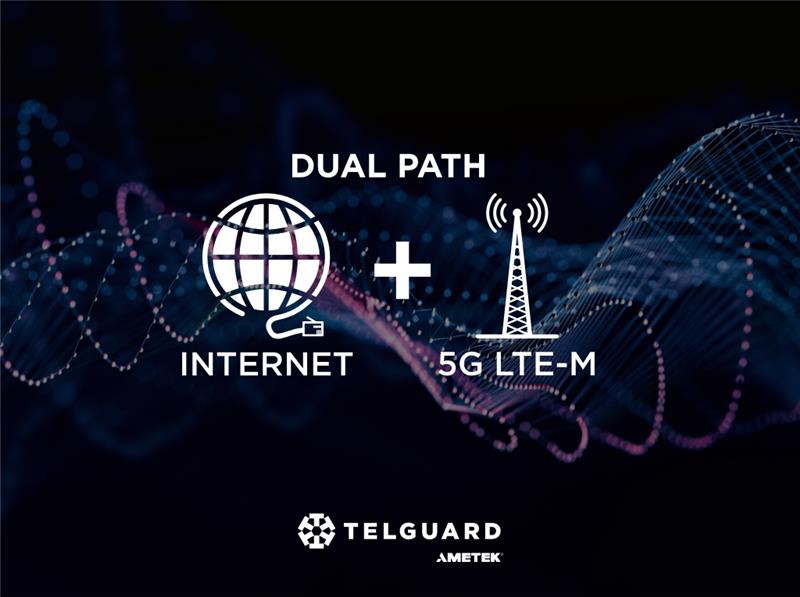LAN Communication for Commercial Applications: Pros and Cons

LAN.
In a world where internet access has become part of our everyday lives, we sometimes forget the complexities behind it. That is until the latest news about some security breach, some website cyber-attack, or similar event reminds us that the internet is not just the place where Google or our social media platforms live. As wonderful as the internet is for connecting the world, and as accessible as it is for us all, its use in life-safety situations has positives and negatives that we should all be aware of as we think of deploying services that rely on it.
For systems like alarm systems to take advantage of internet access to deliver events to supervising stations seems like a no-brainer concept. But let’s take a few moments to evaluate some of the pros and cons of using internet connection as a pathway to deliver alarm events at a deeper level:
- Pro: Internet access is readily available in most commercial and residential installations, and relatively inexpensive. It’s an undeniable fact that for the past several years, internet access has become a standard service in American households. The same applies to most commercial applications. The beauty of using the internet as a pathway to deliver alarm events, is that not only is it likely that access is already available, but its usage for this purpose will not incur any extra charges or fees for the end-user, therefore making it an appealing option for home and property owners.
- Con: Connectivity happens through a LAN connection which is locally managed. Unlike other accepted pathways like Cellular—which is considered WAN (Wide Area Network), internet-connected devices must connect to the internet through a LAN (Local Area Network). In residential applications, the LAN is managed by the homeowner. In a household, whoever has access to the router configurations acts as the network manager. In commercial applications, this job usually falls onto a dedicated network administrator. In both cases, the connection is locally managed. What this means to dealers and integrators is that using internet devices, there is a network administrator with access to interfere with access at any given time.
- Pro: Fast connection. Because of the data size that alarm events use to transmit signals, using an always-available internet access to connect to the supervising station is one of the fastest ways to deliver the events.
- Con: Unless the service is provided and segregated exclusively for the alarm system, it will be a shared connection. While it’s true that internet access will be readily available in most situations, it is also true that it will be a connection that is shared with many other devices. The amount of bandwidth that would be consumed in transmitting alarm signals should be minimal for most systems, but one thing to keep in mind is that we cannot control the usage by other devices on the same network. There could be a situation in which available bandwidth may be overwhelmed by other devices on the network that exists outside of the alarm system and can therefore have a latency effect on communications for the alarm system.
- Con: Using internet access adds a dependency on more equipment. Think about all the equipment that is needed to provide internet access to most premises. Consider a standard household using internet access through a cable provider. Internet access would come into the house from an outside connection into a cable modem, and from the modem, it would connect to a router that provides wired and wireless internet access to the house. That translates to two extra devices or two new points of failure. When it comes to commercial fire applications and the requirements behind them, the situation becomes even more complex because of AHJ requirements that may come into the picture as they relate to power supplies. At the end of the day, the more devices that are needed, the higher the probability of a single device not functioning properly and impacting the pathway.
The internet is a great communication option to deliver alarm events, but the inherent negatives that come from the way access is provided, are topics that one should keep in mind. This is where a system that uses the internet as a pathway but has a second embedded pathway becomes the ideal solution. A product like the Telguard TG-7E (burg) and TG-7FE (Fire) is the ideal solution. While it is capable of using the internet as the primary path, the TG-7FE is a communicator that will always have cellular connectivity available to not only provide the redundant path to continue working when internet access is interrupted but will also allow the device to be reconfigured in order to recover and provides a level of comfort to network administrators that increases acceptance.
With the dual path option, the TG-7FE will quickly switch to cellular access, when LAN internet is not available and can switch back when everything goes back to normal. Furthermore, in situations where a network administrator makes changes to the network (e.g., changing IP address assignment) that block the device from accessing the internet, the TG-7FE provides a cellular connection to also reconfigure the device to adapt to those changes. In other words, the TG-7FE’s cellular connection gives the integrator the ability to not only continue transmitting signals but to also recover in more extreme situations.
Lastly, but certainly not least, acceptance of an internet-based device has been a battle in commercial applications. Whenever the latest security breach hits the news cycle, security requirements become more and more strict. One of the biggest issues that network administrators have with adding internet devices to their networks, has to do with providing inbound access. Network administrators are charged with protecting their networks from intruders and will therefore do what they can to limit inbound access. The way the TG-7FE works, with its always-on cellular connection, gives these network administrators the peace of mind they seek, by removing some of those intrusion concerns. The TG-7FE will simply use cellular connectivity for inbound connections when needed, which means that the local networks are only used for outbound messaging, and any threat of intrusion into the network will not be a concern, because inbound messaging will only happen over the cellular network.
Taking all these facts into consideration, the conclusion is simple. The internet is a great pathway to utilize, but given the potential negatives associated with its use with alarm systems, the TG-7E and TG-7FE communicators provide the level of redundancy and comfort that will allow integrators to truly be able to rely on a solution that will work under all conditions. LAN. LAN.




